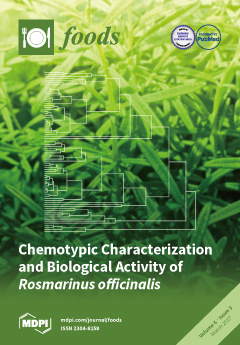Bacteriocin-producing (Bac
+) lactic acid bacteria (LAB) comprising selected strains of
Lactobacillus curvatus,
Lactococcus lactis,
Pediococcus acidilactici, and
Enterococcus faecium and
thailandicus were examined for inhibition of
Listeria monocytogenes during hotdog challenge studies. The Bac
+ strains, or their
[...] Read more.
Bacteriocin-producing (Bac
+) lactic acid bacteria (LAB) comprising selected strains of
Lactobacillus curvatus,
Lactococcus lactis,
Pediococcus acidilactici, and
Enterococcus faecium and
thailandicus were examined for inhibition of
Listeria monocytogenes during hotdog challenge studies. The Bac
+ strains, or their cell-free supernatants (CFS), were grouped according to mode-of-action (MOA) as determined from prior studies. Making a mixture of as many MOAs as possible is a practical way to obtain a potent natural antimicrobial mixture to address
L. monocytogenes contamination of RTE meat products (i.e., hotdogs). The heat resistance of the bacteriocins allowed the use of pasteurization to eliminate residual producer cells for use as post-process surface application or their inclusion into hotdog meat emulsion during cooking. The use of Bac
+ LAB comprising 3× MOAs directly as co-inoculants on hotdogs was not effective at inhibiting
L. monocytogenes. However, the use of multiple MOA Bac
+ CFS mixtures in a variety of trials demonstrated the effectiveness of this approach by showing a >2-log decrease of
L. monocytogenes in treatment samples and 6–7 log difference vs. controls. These data suggest that surface application of multiple mode-of-action bacteriocin mixtures can provide for an Alternative 2, and possibly Alternative 1, process category as specified by USDA-FSIS for control of
L. monocytogenes on RTE meat products.
Full article






